Welcome to Old School Month on Eternal Central. We’re looking at a different Old School 93-94 deck each day of the month. Today’s deck is one that is more for budget-minded players, and one that many players coming back to the game will be familiar with, from what they or a friend used to play at the lunch room table years ago. Red Green Aggro, utilizing efficient threats and burn spells. Here is but one variation as an example.

Constructing Red Green Aggro
There are plenty of ways to build a Kird Ape deck, and this version skips out on the Giant Growth + Blood Lust + Berserk plan, in favor of more creatures and removal. Having played with and against many decks like that, it seems as though those versions can kill the opponent much quicker, but are much more susceptible to spot removal and The Abyss. With Swords to Plowshares being one of the most commonly played cards around me, I don’t really like going all-in on one or two early threats. Berserk also happens to be a more expensive card, and if you’re slowly building up your Old School card pool, this money is likely better spent on things like dual lands you don’t yet own.
One important thing to note about the deck above is that this is intended to be a budget-minded deck first and foremost, that you can add on to you as buy in to the format. If you decide to build from here, you can add things like Moxen, Black Lotus, and others, as you acquire them, most likely replacing basic lands. These aren’t necessary, but they make things at the top of your mana curve like Erhnam Djinn, Blood Moon, and Ball Lightning hit the battlefield earlier. Likewise, Library of Alexandria is the most powerful card in the format, and a welcome addition to this deck, but not central to the deck’s strategy by any means. The more cards you slowly acquire over time, the more deck design possibilities (and power) you give yourself.
Creature Choices
The goal of this build is to curve out, playing 1, 2, 3, and 4 drop creatures on time. Backed with removal, you can seize the early tempo and try to reduce your opponent’s life quickly, and finish them off with a burn spell later if need be.
Kird Ape is the single most efficient creature in the Old School 93-94 card pool, and is something you’d love to see in every opening hand with this deck. It is bigger than most of the 2-drops from other decks (like White Knight and Argothian Pixies), and can attack through a freshly placed (and summoning sick) Mishra’s Factory (before it has the ability to tap to pump itself to a 3/3).
Llanowar Elves and Birds of Paradise are the de facto green accelerants of Old School, and this version sports the Elves only for acceleration, by virtue of their ability to peck away at the opponent’s life when you have nothing else to do. Birds of Paradise can help you get to Ball Lightning mana faster, and you can certainly mix and match them, but I don’t like too many mana dorks to get in the way of actual threats in these decks. Deck space is limited, and every attacker matters when games go long.
Scavenger Folk is a rarely seen card that is not only low on the mana curve, but helps control the battlefield with its secondary ability to blow up an artifact. I like a couple of copies of this better than loading up on a bunch of copies of Crumble or Shatter main deck, because at the very least it can attack if there are no serious artifacts to deal with, and won’t be sitting dead in your hand. It is kind of like King Suleiman or Preacher in that regard, because if it is not using its potent secondary ability, at least it can slowly nibble away at the opponent’s life total.
Argothian Pixies are a modest but critical threat, for their ability to get through an early Mishra’s Factory unblocked. Mix and match as you please with Elvish Archers, which is another somewhat decent 2-drop. Archers have first strike, and can stand up to Knights in combat, but lack the evasion of Pixies.
Ball Lightning is a deadly 3-drop, which can take away about a third of the opponent’s life in one fell swoop. Usually your other creatures will suck up the opponent’s early Bolts and Swords, leaving this free to take a big chunk of their life. Keep in mind that Ball Lightning has trample, but does not have first strike, and does not interact favorably with many of the creatures in White Weenie decks (and you’ll often sideboard this out against them for that reason).
At the top of your mana curve is the classic Erhnam Djinn, which is again a decent value in terms of creature stat efficiency for the Old School card pool. The more you slowly power up your deck, the better this becomes, as it can be dropped in to play ahead of the normal mana curve.
Whirling Dervish is another nice threat in the 2 mana slot, but one that I usually reserve for the sideboard in this deck. The double green in the casting cost means you may not always be able to cast it on turn two with this version, because the mana is tilted more heavily towards red to be able to cast timely Ball Lightnings.
Draw Engines
Sylvan Library is green’s answer to the blue draw spells, and this deck relies heavily on it. I like at least 3 copies, if you can afford them (white bordered 4th and 5th Edition ones are much cheaper, at about $12 each as of this writing). The ability to repeatedly filter your draws is critical, and when playing against decks with Swords to Plowshares I’ll be especially aggressive in drawing extra cards from the first active Sylvan draw onwards, as you’re likely to be gaining life when they repeatedly Swords to Plowshares your creatures, and you want the extra card advantage if possible before Sylvan gets Disenchanted. Sylvan is probably the best card in your deck against Control decks, so where possible, try to sequence playing it to evade countermagic. The reason you’ll see around 3 copies in most of the decks I play with green mana is because your odds of winning any game dramatically increase when you have an active Sylvan Library, and you can usually count on the first one immediately getting countered or removed, so it’s better to have more of them in your deck.
Wheel of Fortune is a dangerous card, but probably worthwhile here given the lack of other efficient draw spells in Red and Green. Giving your opponent a fresh hand of 7 is always a questionable gambit, but the hope is that you are better able to utilize those resources in the mid-game, or find a couple of game-ending burn spells. Don’t be afraid to just let Wheel sit idly by if you are already in a winning position. It is better at helping you come back from a losing position, or coming back from opposing discard spells like Hymn to Tourach and Mind Twist, and should be carefully considered.
Removal
Red and green are somewhat hamstrung when it comes to removal options, due to the balancing of the “color pie.” Efficient burn spells like Lightning Bolt and Chain Lightning are never dead, and beyond that you may wish to supplement the removal suite with a few artifact removal spells. Shatter is probably the most efficient of the bunch for main deck inclusion, due to the instant speed being able to knock out anything from Jayemdae Tome to Mishra’s Factory.
Chaos Orb is a pricey card in terms of real world dollars, but is the defining removal spell of Old School Magic. If you can borrow or acquire one, I strongly recommend doing so, as it can remove anything on the battlefield if you are adept at flipping it. If this is outside your budget, this deck slot is open to anything you want to slide in to the deck, from threat to removal to mana source.
Constructing a Mana Base
Often the most expensive card in this deck is Taiga, and in versions with Ball Lightning this card is critical. If Taiga is not yet within your budget, drop the Ball Lightnings and trend towards more Elvish Archers or some other cheap threats that only require a single colored mana source in the casting cost. It’s pretty miserable to sit there turn after turn with a Ball Lightning in your hand that you can’t cast because of the mana you’ve drawn. Doing so will probably require a slight re-balancing of the Mountain/Forest count, as you’ll probably end up shifting towards a heavier green base for your creatures, with the red accounting for mostly removal spells.
In this same vein, City of Brass is basically another Taiga, and one that can reliably help you cast Ball Lightning on time. The life loss can stack up if you have the all-City of Brass land draw, but usually this is not a concern, as you’ll be doing damage to your opponent at a faster clip than City can deal it to you.
Strip Mine is essential for being able to deal with opposing Factories and Library of Alexandria. Occasionally you’ll want to cut off access to a specific color the opponent can produce, or keep the opponent off of double blue mana (for countermagic) for a turn, but use your Strip Mines carefully. Factory is a nuisance to play against when you have an army of small creatures, and Strip Mine is often the best remedy.
Mishra’s Factory is another threat you can utilize, and another colorless mana source. Be selective and thoughtful when constructing the mana base of your own deck, as too many colorless lands may prevent you from casting your threats on time.
As mentioned above, if you decide to add Moxen to this deck, they will help speed out your threats. Mox Ruby is probably the best (because it can power out faster Ball Lightnings), followed by Emerald. Sol Ring is decent, but not that great, because in the version presented above, you don’t have that much that is benefited by it, other than Erhnam Djinn and sideboard options.
Designing the Sideboard
Nevinyrral’s Disk is a very slow, but effective reset button. The Red-Green scheme lacks a diversity of removal options, and this has the ability to blow up everything on the board, creating card advantage in the process.
Facing off against The Abyss is a daunting task for most aggressive decks, and you should have a plan for doing so. Tranquility can blow up all enchantments, which is fine, but a bit slow at 3 mana. Concordant Crossroads is only a single mana, and has the advantage of also being an Enchant World card, meaning that if you play it after The Abyss (or another Enchant World) is already in play, it will kill that other Enchant World off (as only the most recently cast/resolved Enchant World can be in play), making it not only a removal spell, but giving all of your creatures haste as well (which can be a big deal). I like a couple copies of Concordant Crossroads at a minimum if you can afford them (thankfully this was reprinted in Chronicles and is somewhat affordable). Between this and Disk, you have a handful of ways to deal with The Abyss.
Whirling Dervish is another way to play through The Abyss (by virtue of being protection from black; The Abyss targets a creature, and thus cannot kill Dervish). It’s also good against black creature decks, so I like a couple of copies somewhere in the 75 of Red Green decks.
Addressing enemy artifacts is highly relevant in 93-94, and you have options like Shatter, Shatterstorm, Detonate, Artifact Blast, and Crumble. I like at least a couple of copies of Shatterstorm here, specifically because if it resolves you’re likely to gain massive card advantage against the decks that rely heavily on artifacts. Trading one-for-one is fine, but not likely to win you the game, since other decks are usually much more powerful if they’re fully powered.
Blood Moon is a somewhat costly card (in terms of dollars and cents), but is another bomb against the three, four, and five color decks floating around. If you can’t afford this, you can certainly subsidize with other sideboard options, including Tsunami.
Red Elemental Blast is a critical staple of Red sideboarding, and this deck wants at least a couple of copies. Not only can it counter all of the fancy Blue instants, but it can also kill a resolved Serendib Efreet, which is a big deal in a deck that lacks flyers.
Spinal Villain is a narrow card that is adept at dealing with all of the creature threats in the Blue-Red burn decks, but is often too fragile, and dies immediately to a burn spell.
Playing Red Green Aggro
You might notice that a number of the sideboard options can be considered for main deck inclusion, as they create card advantage, or can sink entire strategies. I prefer to have a very aggressive footing in Game 1, and then tailor the deck towards what my opponent is doing in post-sideboard games, but build your deck with whatever you’d like, and what you think will be most effective in your anticipated metagame.
Ten Opening Hands with Red Green Aggro
Here are ten randomly drawn opening hands with the deck (in order, and not manipulated in any way), and a few brief words with how I might look to play said opening hands.
Opening Hand 1
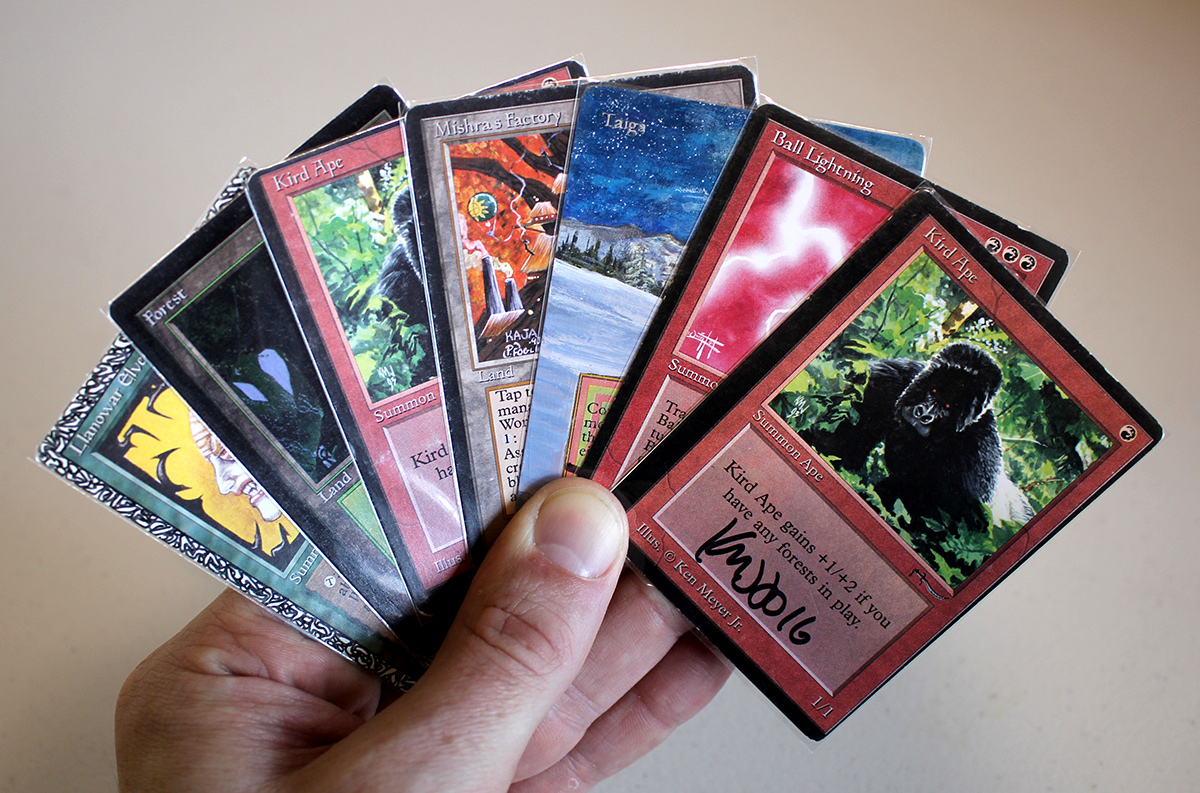
This is a reasonable hand with multiple threats and mana, topping out at Ball Lightning, which we don’t yet have mana to cast. I’d lead with Taiga in to Kird Ape, and then follow up on the next turn with the Forest and more.
Opening Hand 2

Ball Lightning sticks out like a sore thumb here, but the rest of the hand is basically mono green, that lands Llanowar Elves on Turn 1, Sylvan + Strip Mine (or Scavenger Folk) on Turn 2, and more. This is a keeper, and Ball Lightning will hopefully be live as the game grinds on and we find red mana.
Opening Hand 3
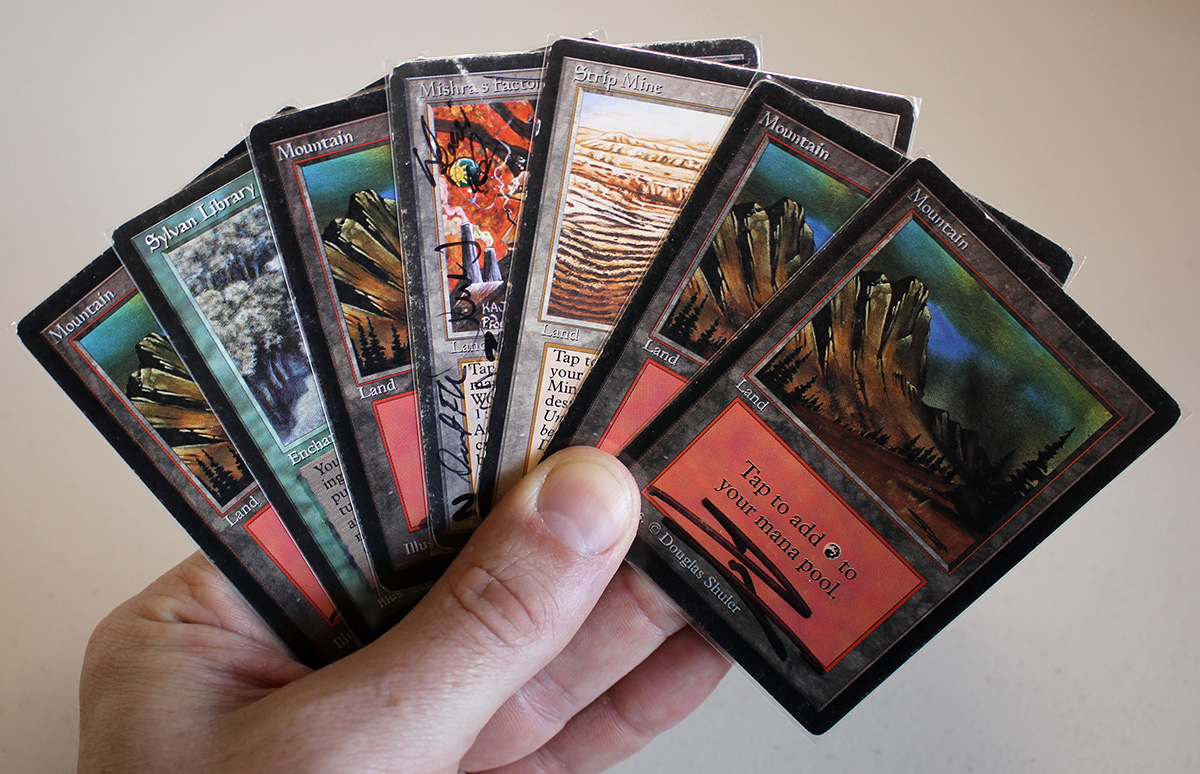
With a bunch of red mana, and nothing to do with, along with an uncastable Sylvan Library, this hand is a mulligan.
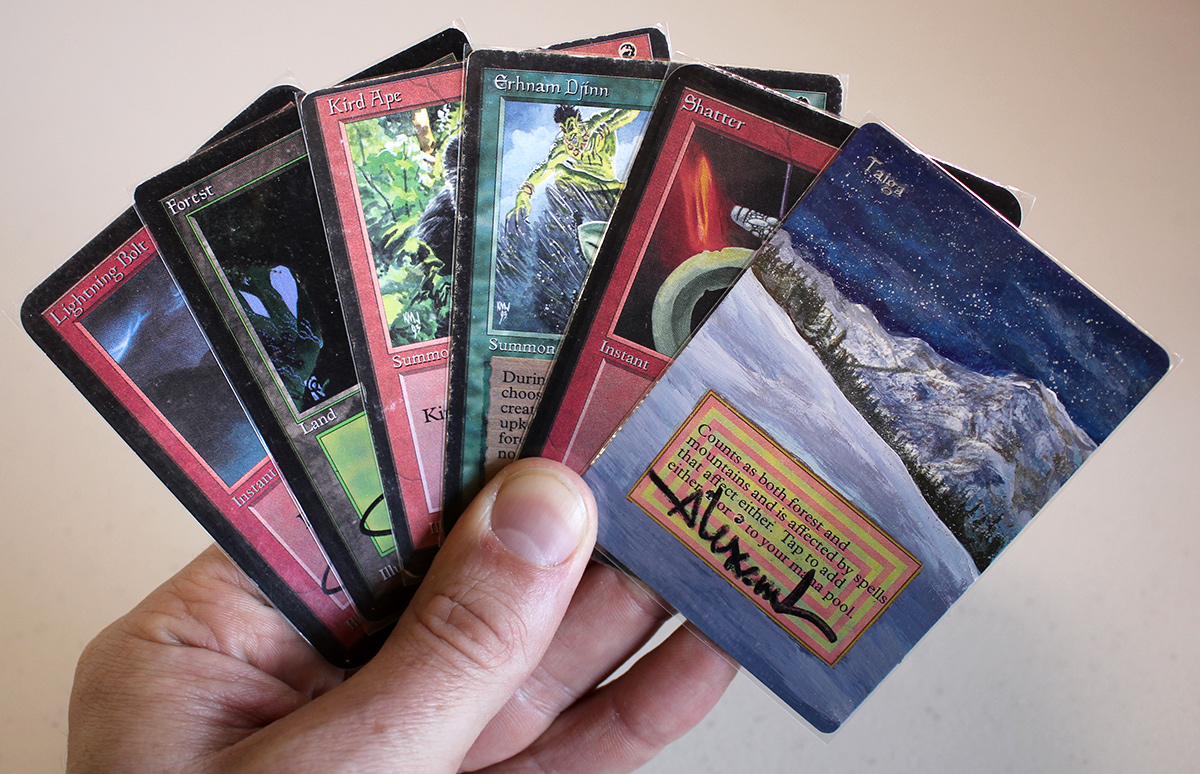
With on-color mana and a reasonable cost curve, this hand is a keepable six. Taiga plus Kird Ape on Turn 1, followed by a removal spell on Turn 2 make this a fine hand.
Opening Hand 4
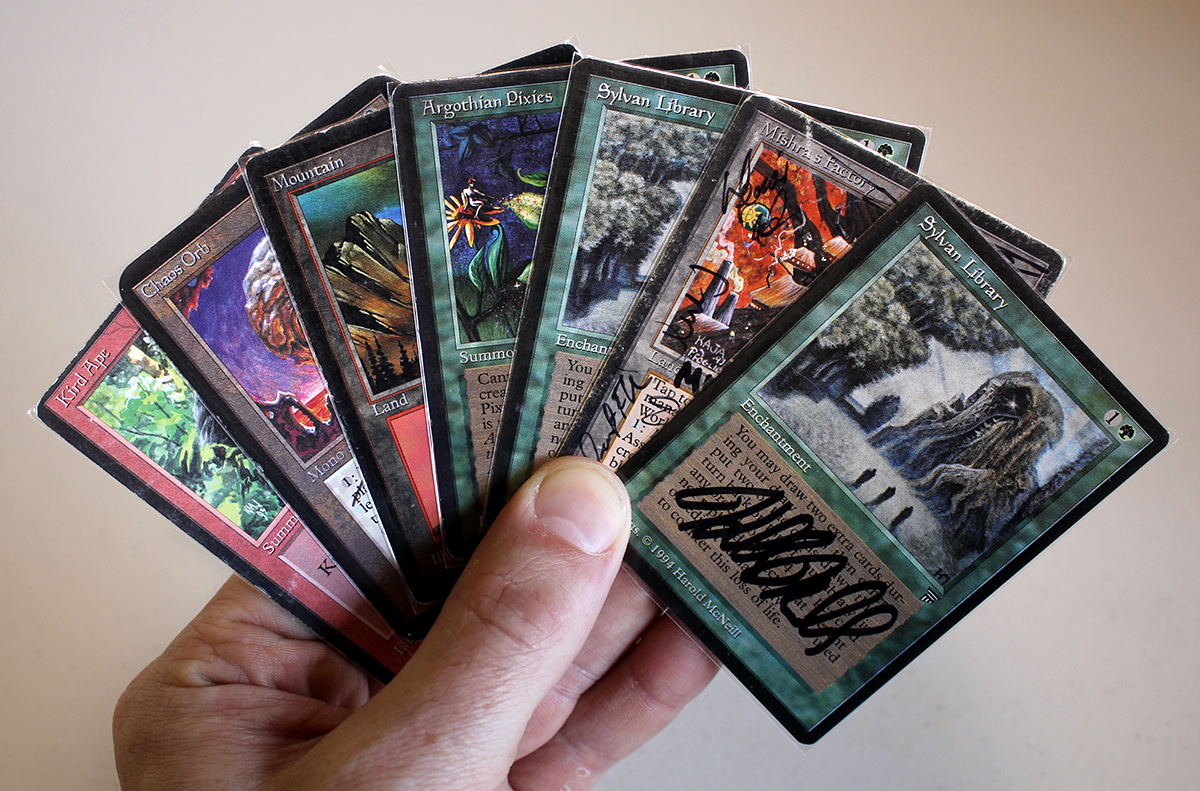
This green-heavy hand has no green mana, and is probably a mulligan. While a first turn Kird Ape and second turn Chaos Orb is tempting, it’s very weak to Strip Mine, and probably not enough reason to keep this one.
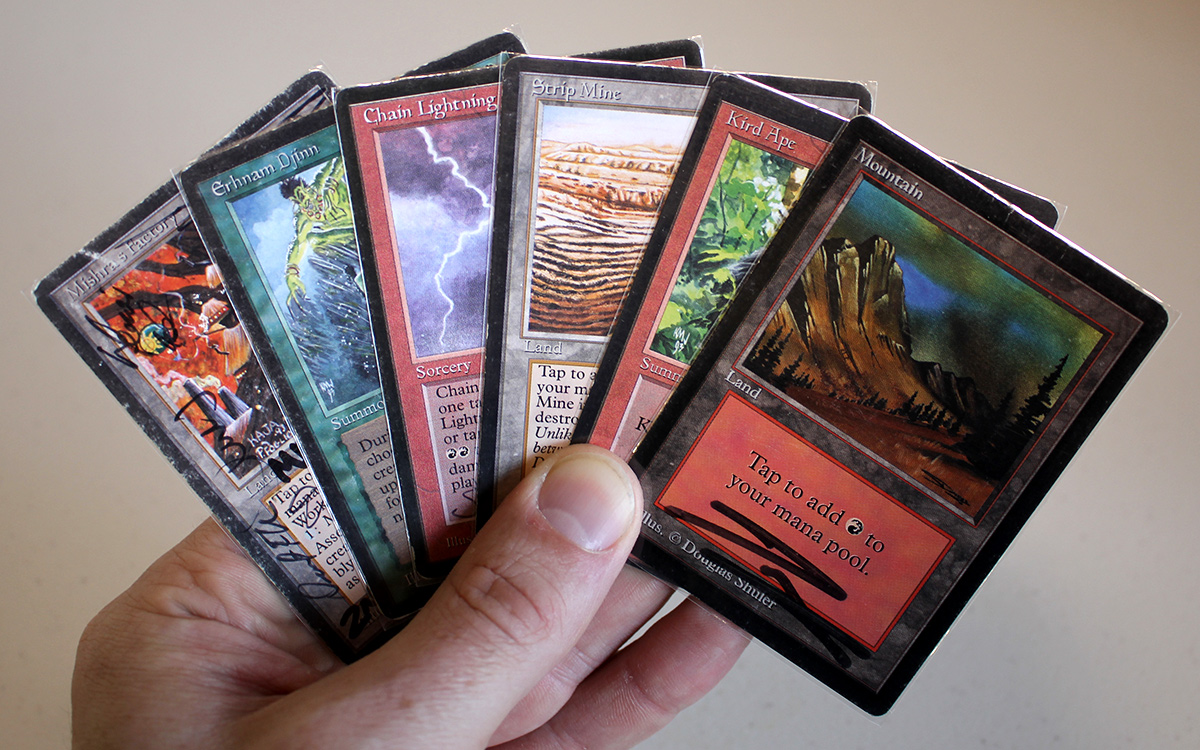
With a couple of cheap threats, cheap removal, and Strip Mine, this hand is workable. We don’t yet have green mana to cast the Erhnam, but we are a few turns away from casting that at least, so this is fine, and better than mulliganing to five. With our pre-game scry we’re seeking green mana and pushing anything else to the bottom.
Opening Hand 5
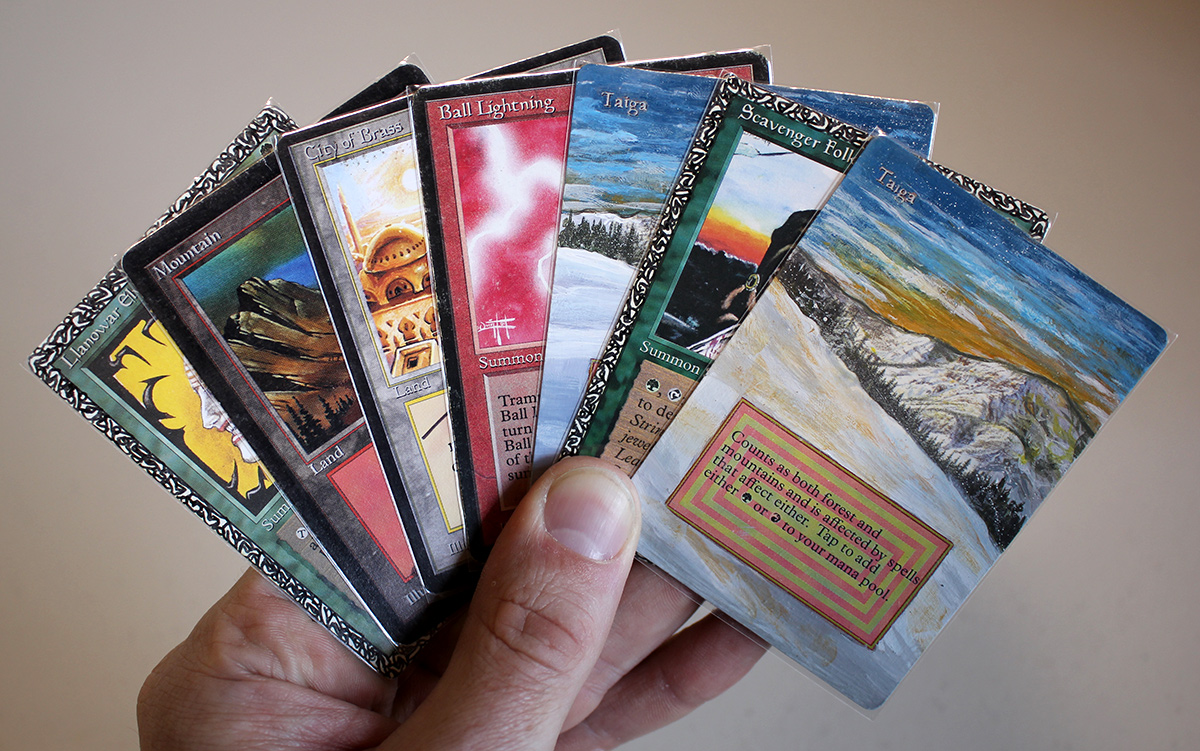
Plenty of on-color mana and threats make this an easy keep.
Opening Hand 6
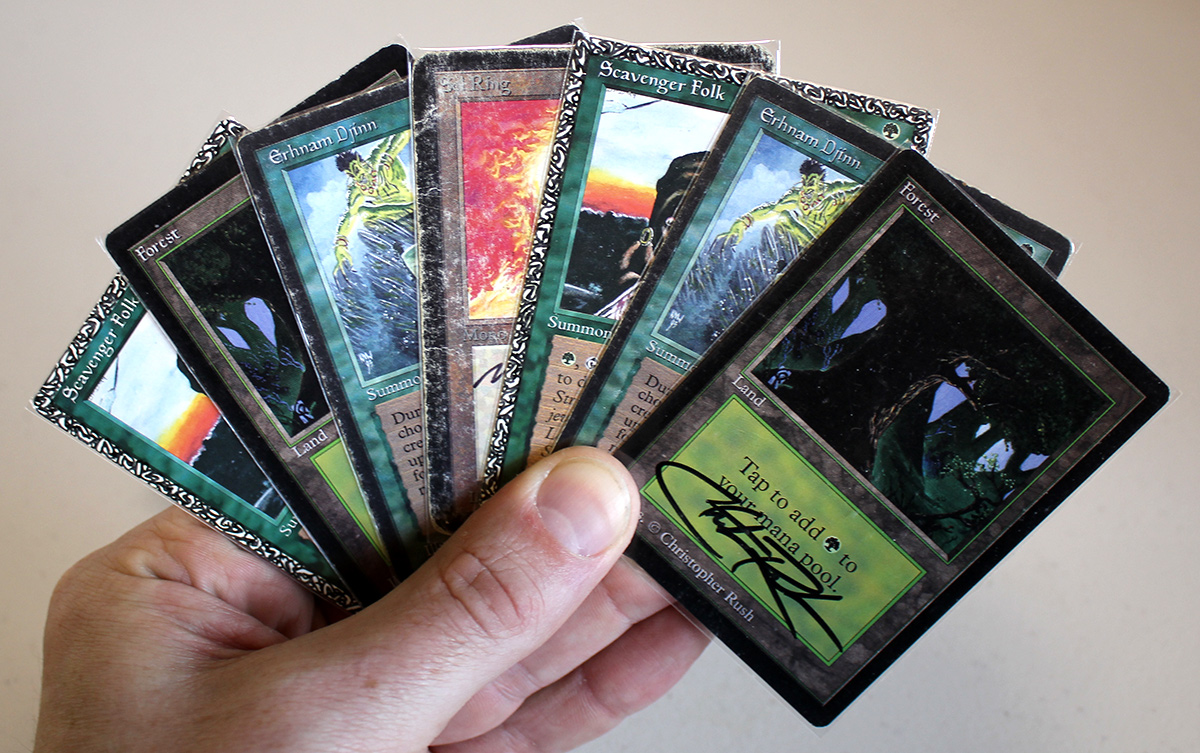
This is essentially a mono green hand, and with plenty of mana and threats, this is a fine hand to keep. Basically every draw going forward is welcome, whether it is red mana, removal, or more green threats.
Opening Hand 7
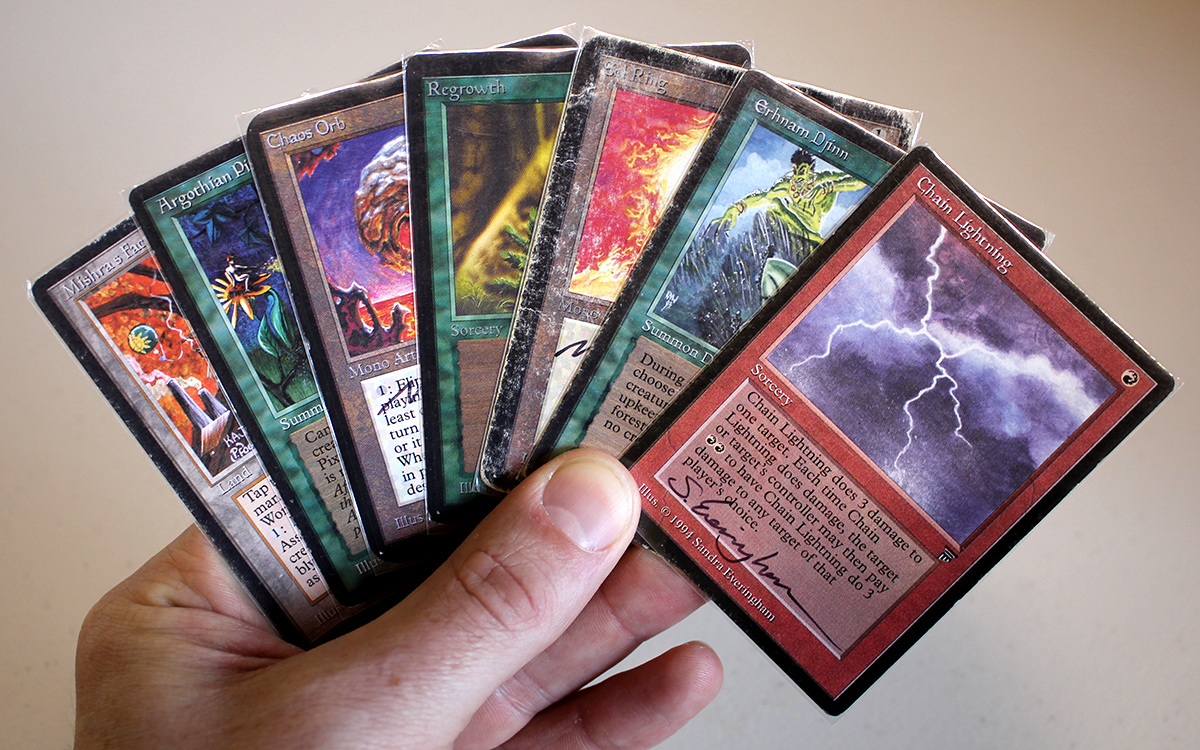
With lack of any colored mana this is a pretty easy mulligan.
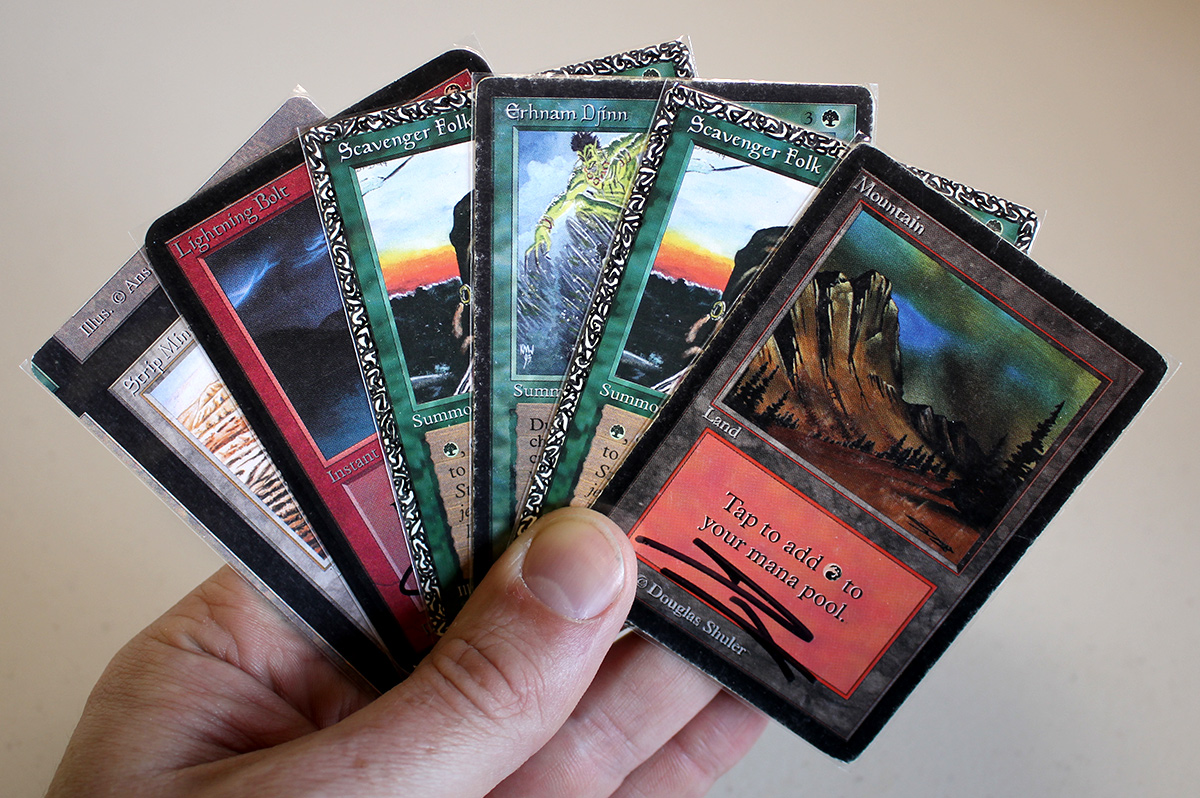
Another suspect hand, missing green mana. The presence of removal and Strip Mine probably makes this hand of six better than mulliganing to five, as it seems more likely that you’ll draw in to a green hand to unlock the rest of this hand, rather than winning with a fresh five and fewer resources after another mulligan. With our pre-game scry we’re going to be actively seeking any green mana, and bottoming away anything else.
Opening Hand 8
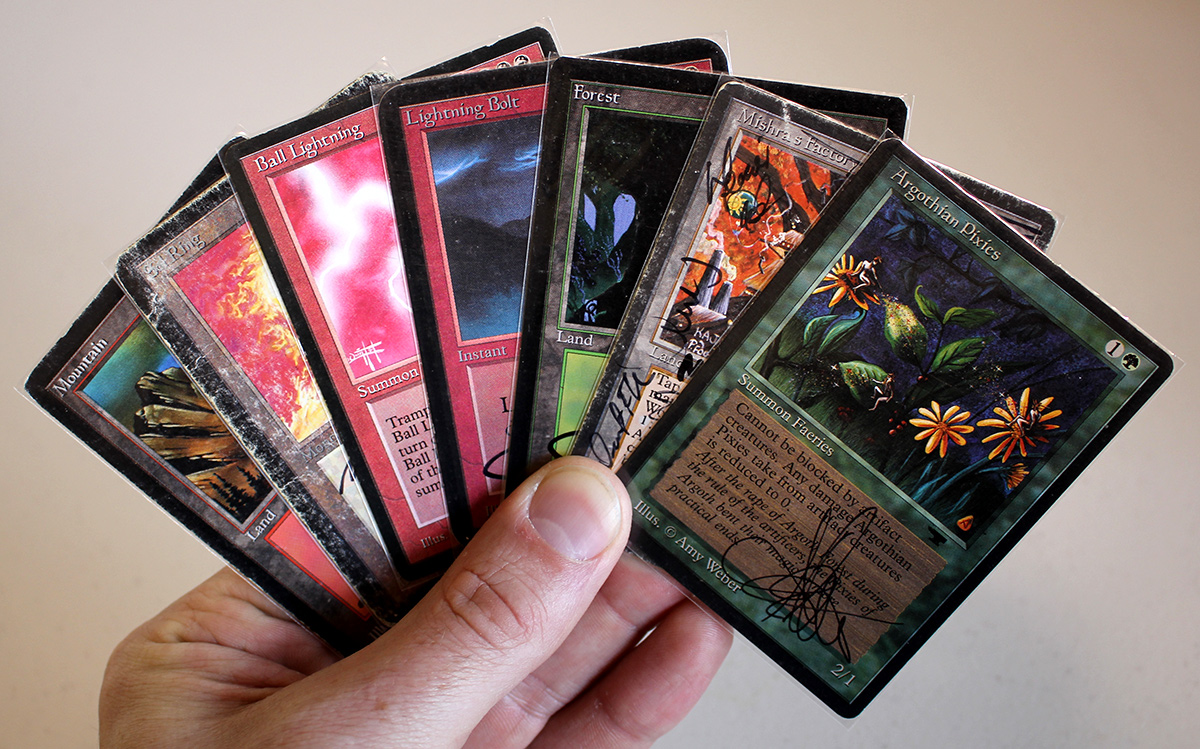
With a mix of colored mana, acceleration, removal, and an on-curve threat, this is a good hand. This also demonstrates the challenge of designing a mana base that can accommodate a Ball Lightning on curve. In this hand it is likely to be a mid or late game threat when the opponent is least expecting it.
Opening Hand 9
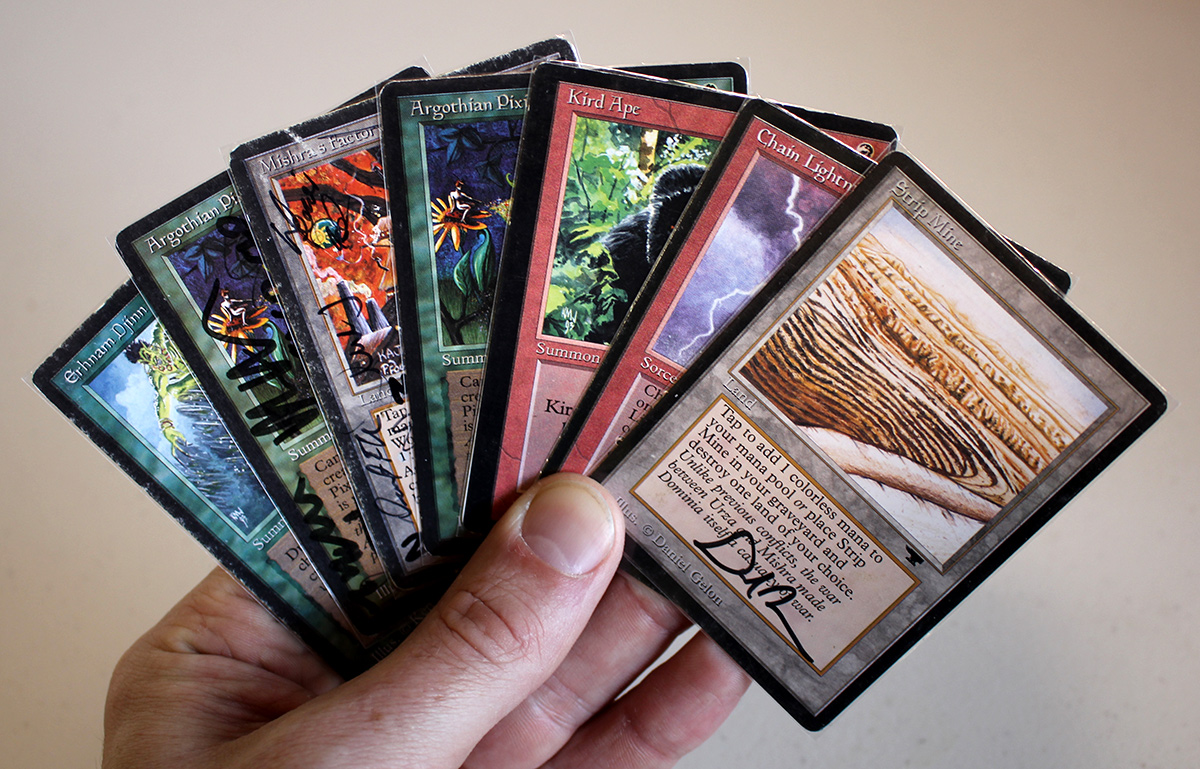
Strip Mine and Factory are great lands in this hand, but without any colored mana to cast the rest of the hand we’re shipping this back for a fresh six.
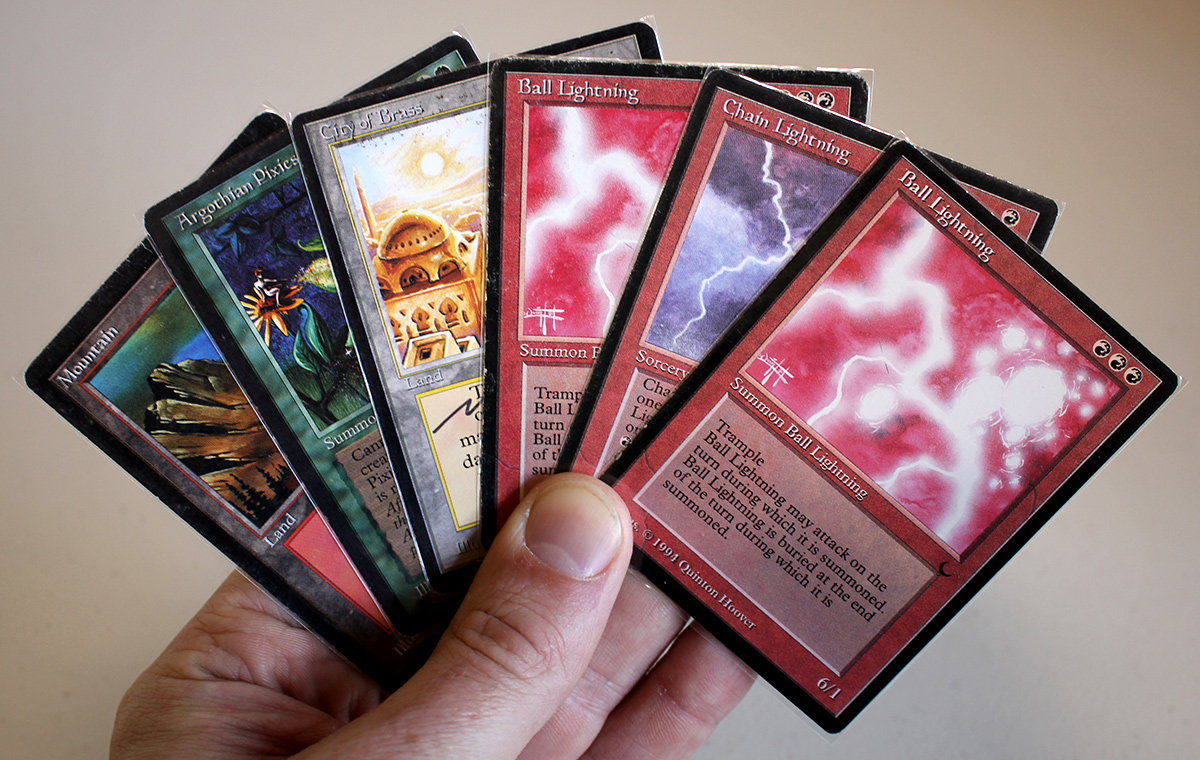
There are some great threats, and enough mana to get by in this opener. With the pre-game scry I’d look for any mana source, and push anything else but Sylvan Library to the bottom. I’d lead with Mountain on the first turn, and then City of Brass in to Argothian Pixies, and then if we hit any other red mana in the first few turns we are off to the races, and this hand can finish the opponent off in short order.
Opening Hand 10
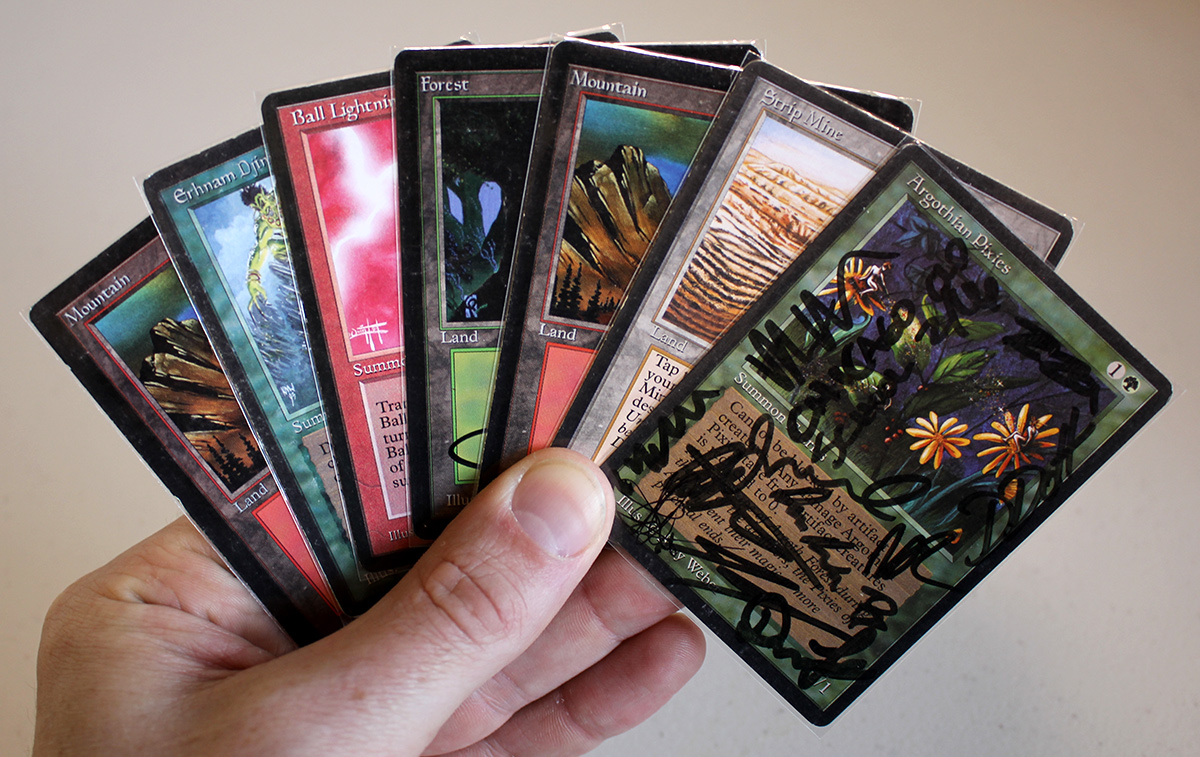
Another hand with a mix of threats and plenty of on-colored mana, this is a keeper.
Concluding Thoughts
As mentioned above, I prefer a Red Green version that skips out on most of the pump spells, in exchange for simply having more threats. This is often slightly slower, but more resilient to removal. If you want to include Giant Growth (or even just a couple of them), that may also be effective, as just the threat of having Giant Growth can make the opponent be weary of creature combat, and the ensuing shenanigans.
Black Vise is another card that commonly sees play in aggressive decks (or sideboards). Test it out and see if you like it. Depending on how fast your metagame is, this can either do a ton of early damage, or almost none at all. If there are a good number of decks utilizing Ivory Tower in your area, the importance of this card goes up dramatically.
Likewise, we’ve skipped the classic Channel + Fireball combo here, as Channel is pretty dead on its own in this build, but that is another fun combo that can be considered. I’ve played a couple of Fireballs main, and then a couple of more + Channel in the sideboard, specifically to bring in against the non-blue decks that can’t disrupt this combo.
Load this deck up in your queue, and even if you don’t enjoy playing it as much as your other decks, it is a fine deck to lend out to newcomers or friends as a standby deck. It also transitions well to a much stronger deck (RUG Aggro) as you slowly add more dual lands and Power 9 cards to your deck building pool.
Stay tuned to Eternal Central for more sick 93-94 brews all month long. Thanks for reading.

